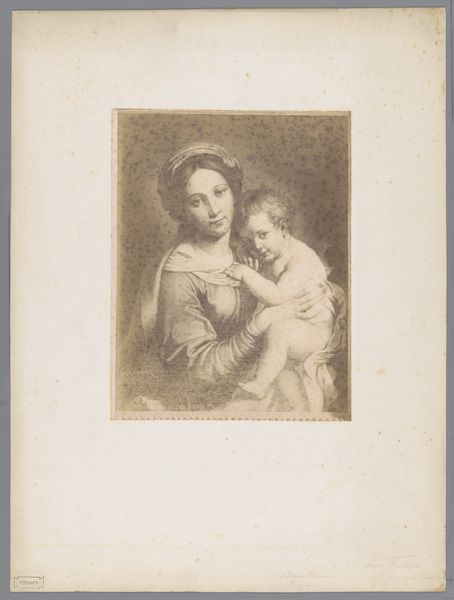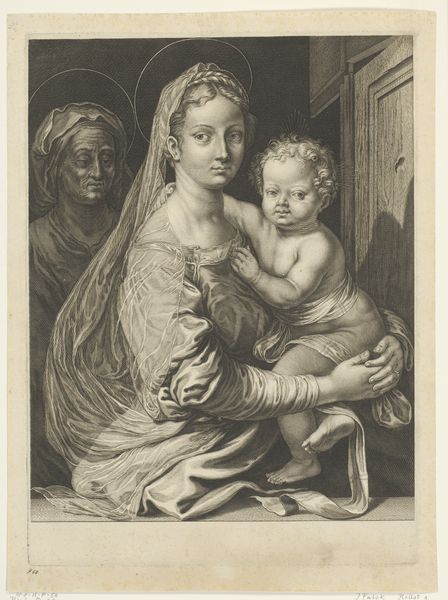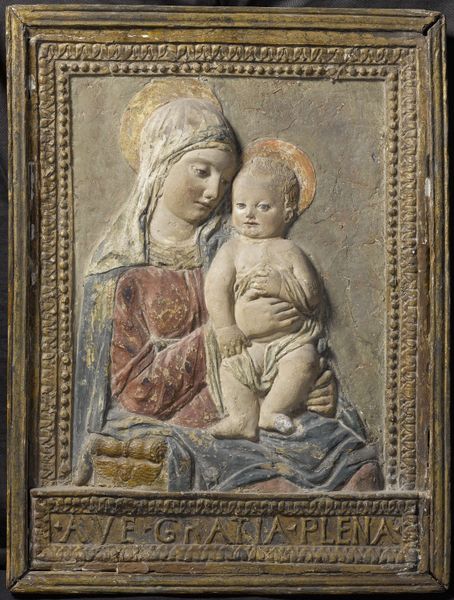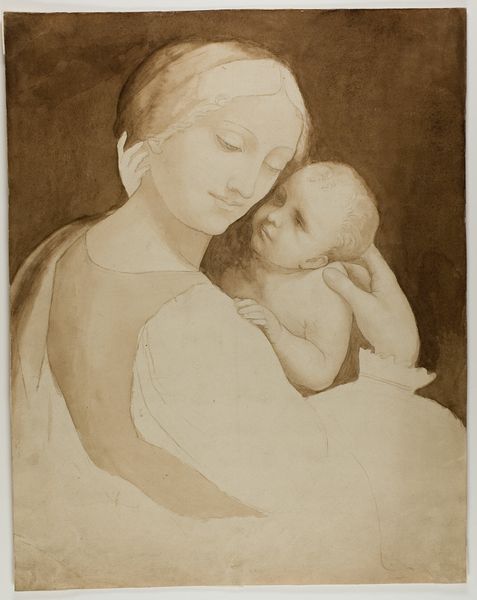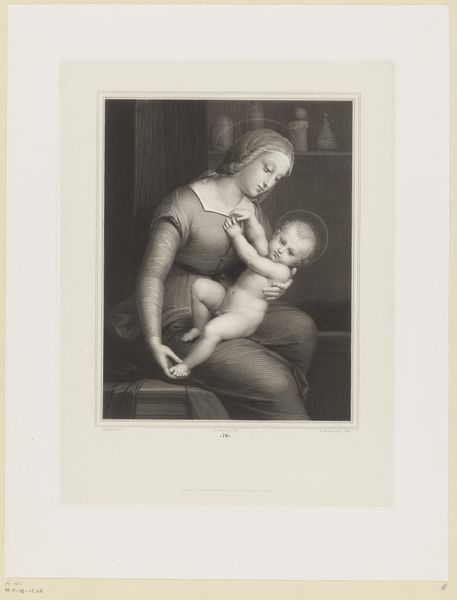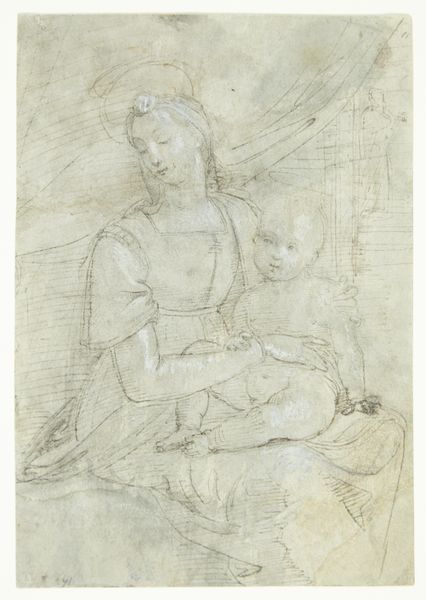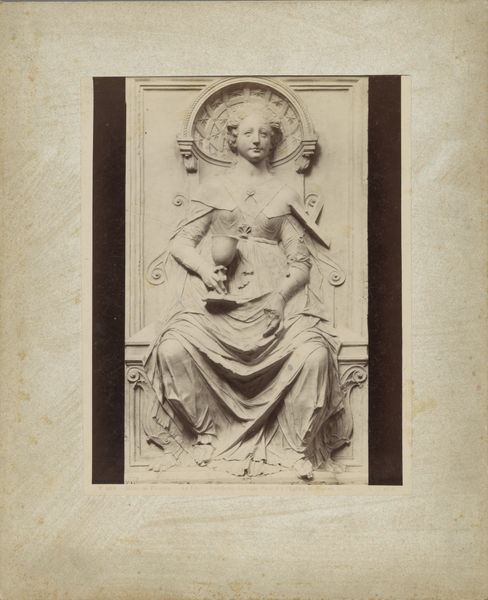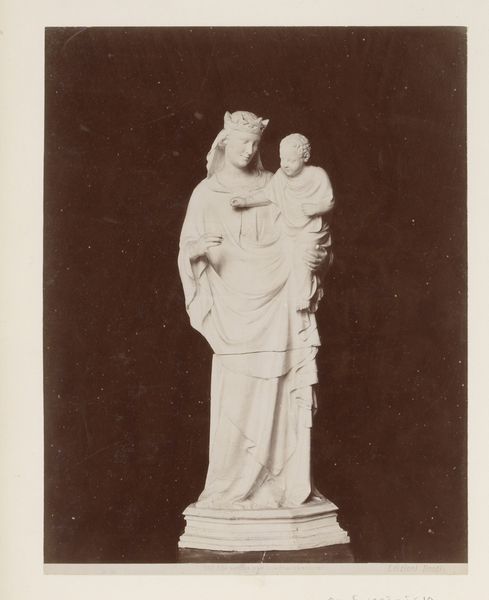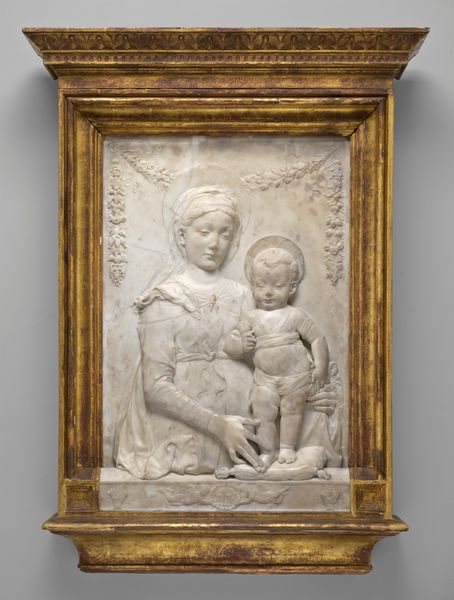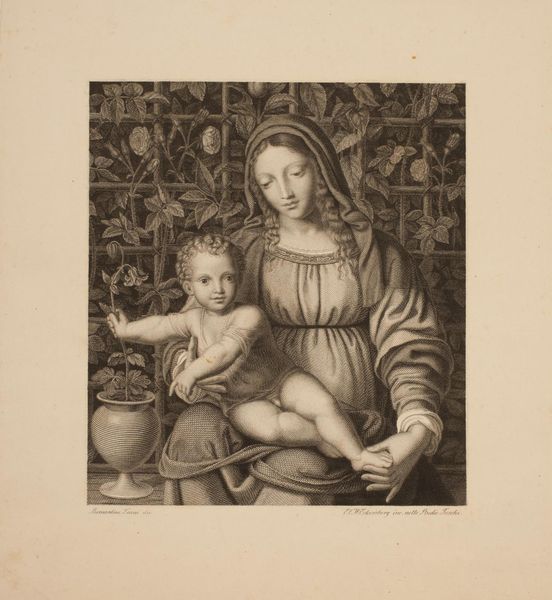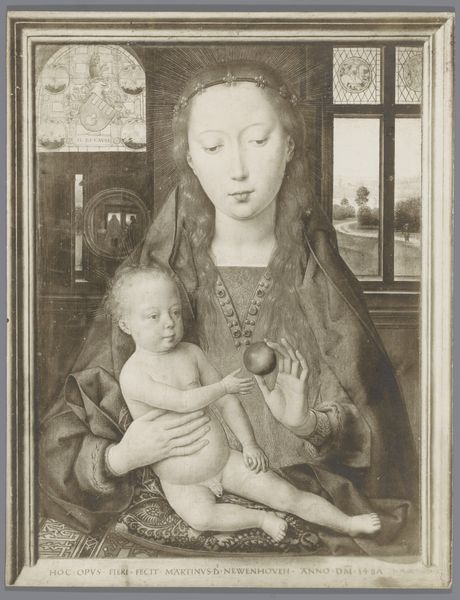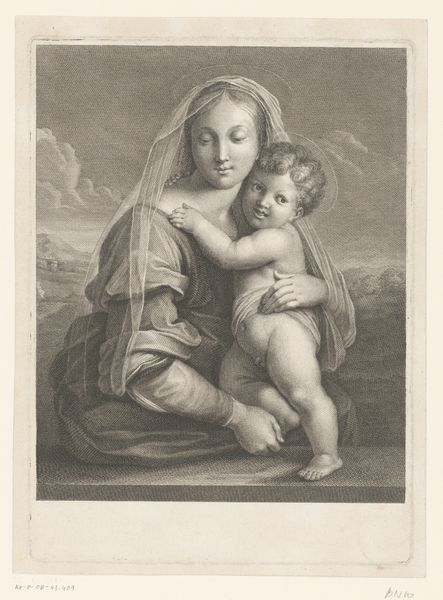
relief, photography
#
portrait
#
water colours
#
relief
#
charcoal art
#
photography
#
coloured pencil
#
history-painting
#
watercolor
Dimensions: height 263 mm, width 187 mm
Copyright: Rijks Museum: Open Domain
Editor: This is "Relief of Mary with Child" from around 1875-1900, likely a photograph by Josef Löwy of an existing relief sculpture. There's something serene yet melancholic about the image...almost a photographic study of faith and devotion. What do you see in this piece? Curator: Indeed, the melancholic atmosphere speaks volumes. Beyond its aesthetic qualities, I'm interested in this image as a historical document that highlights how notions of femininity, motherhood, and religious authority were constructed and disseminated in the late 19th century. Think about how this photographic reproduction democratized access to religious imagery, allowing individuals to contemplate the Virgin Mary in the domestic sphere. How might this accessibility have challenged or reinforced existing social hierarchies? Editor: That's fascinating. I hadn’t considered the democratization aspect. It seems so staged though; were there contemporaneous debates about the role of art in expressing religious fervor, given its commercial possibilities at the time? Curator: Absolutely. We must remember that photography emerged during a period of significant social and political upheaval. Its seemingly objective lens was often deployed to legitimize specific ideologies. Considering this photograph in relation to feminist and postcolonial theories encourages us to unpack how power operates through representation, and how these images helped construct identities and solidify social roles. What questions does the photograph, as a mediated form of documentation, pose to our understanding of artistic and religious practices? Editor: It highlights how reproductions can alter our understanding and experience. I see this photograph differently now – less about devotional serenity and more about the power structures it inadvertently reveals. Curator: Precisely! Analyzing these images in dialogue with their historical contexts allows us to understand not just art history, but also the ongoing struggles for social justice and equality that shape our present.
Comments
No comments
Be the first to comment and join the conversation on the ultimate creative platform.

